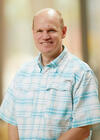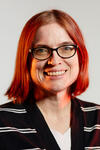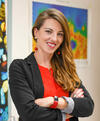In The News: Department of Physics and Astronomy
The United system, known as Wilma, boards passengers in order of window, middle and aisle seats. But it may not relieve all the bottlenecks, industry professionals argue.

The airline said in an internal memo that it will implement the plan on Oct. 26. The plan – called WILMA, for window, middle and aisle -- was tested at several locations and deemed to shave up to two minutes off boarding time. Variations of the WILMA approach have existed for many years.
More than 500 free-floating planetary-mass objects have been discovered wandering through the Orion Nebula thanks to new observations by the James Webb Space Telescope (JWST). Most bizarrely, about 40 of these newfound objects in the nebula’s Trapezium Cluster exist in wide binary pairs, confounding expectations about how these so-called “rogue planets” form.

From Winnemucca to Las Vegas, Nevadans are in a position to see the eclipse better than almost anywhere else

Shouldn’t we be boarding airplanes back to front? That seems to be a common refrain across the internet and in airports as people struggle to make sense of airlines’ increasingly byzantine boarding processes.

You are familiar with that friendly boarding announcement from the gate agent. Unfortunately, it means the next 45 minutes of your life will be messy. And airlines have made it chaotic by design — so people will pay to get an easier boarding process.

You can only see it once in a blue moon so, turn your eyes to the sky as the moon will be a bit brighter and larger Wednesday night.
Scientists from the Chinese Academy of Sciences’ National Astronomical Observatories (NAOC), along with their international partners, used the Five-hundred-meter Spherical radio Telescope (FAST) to identify a binary pulsar system with an orbital period of 53 minutes. This newly discovered system, known as PSR J1953+1844 or M71E, bridges a previously existing gap in our understanding of the evolutionary stages of spider pulsar systems.

A lot of the time, when someone mentions the University of Nevada Las Vegas, they’re speaking of its renowned School of Hospitality, its fast-growing medical school or its Jerry Tarkanian-era men’s basketball teams. But UNLV is also one of the nation’s top research universities, awarded an R1 classification (“very high research activity”) from the Carnegie Classification of Institutions of Higher Education. Join the Weekly as we peek into the laboratories where world-changing scientific research is ongoing.

A lot of the time, when someone mentions the University of Nevada Las Vegas, they’re speaking of its renowned School of Hospitality, its fast-growing medical school or its Jerry Tarkanian-era men’s basketball teams. But UNLV is also one of the nation’s top research universities, awarded an R1 classification (“very high research activity”) from the Carnegie Classification of Institutions of Higher Education. Join the Weekly as we peek into the laboratories where world-changing scientific research is ongoing.

A lot of the time, when someone mentions the University of Nevada Las Vegas, they’re speaking of its renowned School of Hospitality, its fast-growing medical school or its Jerry Tarkanian-era men’s basketball teams. But UNLV is also one of the nation’s top research universities, awarded an R1 classification (“very high research activity”) from the Carnegie Classification of Institutions of Higher Education. Join the Weekly as we peek into the laboratories where world-changing scientific research is ongoing.
The quest for the true value of the Hubble constant (H0) tension which gives a measure of the current expansion of the Universe is still on. The fervent debate today is about the discrepancy between the H0 values obtained from type Ia supernovae (SNe Ia) and from the Cosmic Microwave Background Radiation (CMB), a radiation emitted from the early Universe close to its origin.



